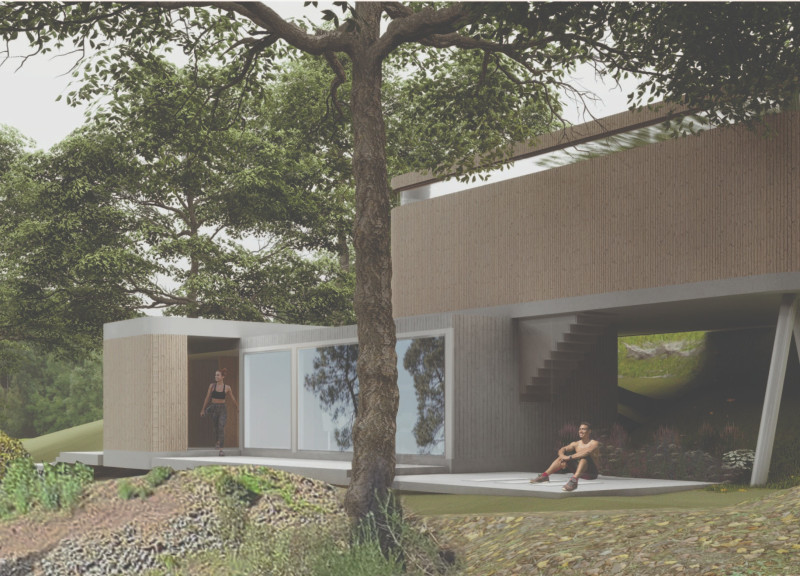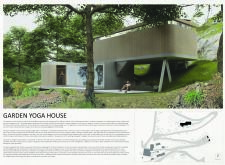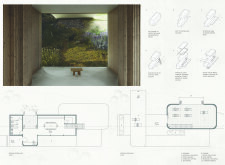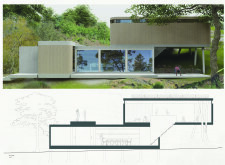5 key facts about this project
The project encompasses three primary areas: an outdoor garden, a yoga studio, and various support spaces for communal and private activities. This arrangement allows users to engage deeply with their surroundings while practicing yoga and meditation. The architecture is informed by principles of sustainability and user experience, aiming to enhance the overall sense of well-being.
Spatial Organization and Flow
The design articulates a deliberate spatial hierarchy, leading users through a sequence of areas that facilitate both movement and contemplation. The yoga studio occupies a prominent elevated position, affording expansive views of the surrounding landscape through large glass panels. These elements enhance natural light and contribute to a tranquil atmosphere. The lower levels house support functions, including changing rooms and communal areas that foster social interaction and relaxation.
This organization encourages users to transition seamlessly between external gardens and internal activity spaces, thereby enriching their experience and connection to nature. Pathways interlink these zones, further promoting exploration of the various aspects of the facility.
Sustainable Materiality and Unique Features
The use of reinforced concrete provides the structural foundation of the building, ensuring durability while supporting expansive interiors. Natural timber elements are employed for their aesthetic qualities and warm tactile experience. Extensive use of glass creates a visual connection with the exterior landscape, allowing natural light to permeate the interiors while minimizing reliance on artificial lighting.
A distinctive aspect of the Garden Yoga House is its floating roof design, which offers a modern aesthetic while serving practical functions such as rainwater collection and enhancing airflow. The incorporation of sustainable design elements, including solar panels and rain gardens, demonstrates a commitment to environmental responsibility. Local materials are favored to reinforce a sense of place and support the local economy.
Integrative Landscape Design
The architectural concept extends beyond the building itself, integrating well-planned landscaping that enhances the user experience. Native plants are utilized to create a natural buffer around the structure, promoting biodiversity and reducing maintenance requirements. The gardens include spaces designed for outdoor yoga sessions, further blurring the distinction between inside and outside.
This holistic approach highlights the importance of landscape within the overall architectural framework, encouraging users to connect with the environment on multiple levels. By providing various settings for practice and contemplation, the design fosters a restorative connection to nature.
For those interested in examining the specifics of this architectural project, detailed architectural plans, sections, and designs are available for further exploration. These documents offer in-depth insights into the unique architectural ideas that shape the Garden Yoga House and contribute to its role as a dedicated space for wellness and mindfulness.


























